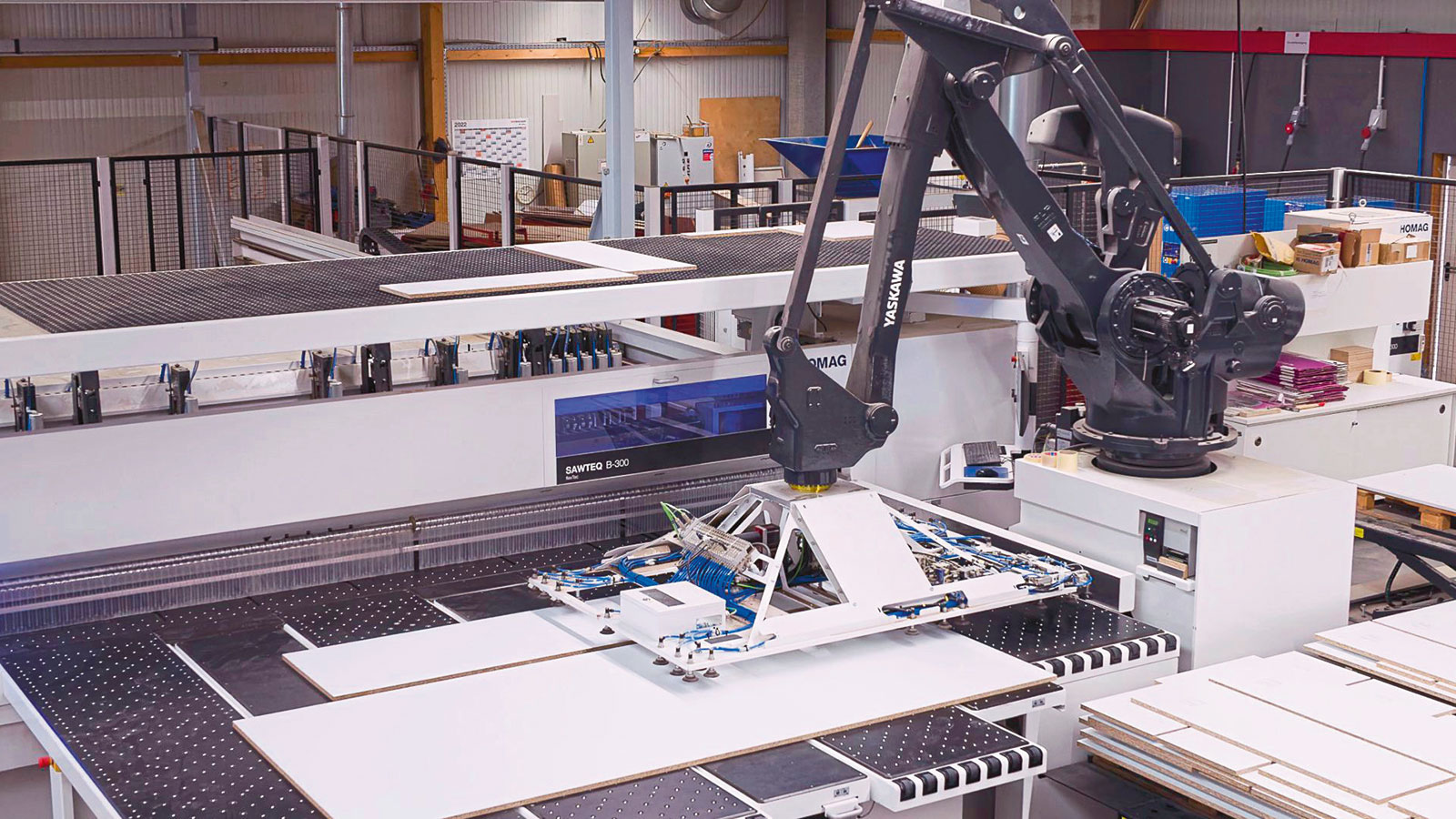
Even with automatic storage, lifting tables and vacuum lifters, panel cutting remains an arduous business, especially when the schedule is tight. The company Mayer in Sulzfeld leaves this work to a robot, which never gets tired.
Brisk business
is the order of the day in the machine hall of Mayer in Sulzfeld near Heilbronn. With a total of 110 employees at the company that fits out medical practices, five carpenters are responsible for producing parts. One carpenter operates a large edge banding machine with a return, another operates a conventional horizontal panel saw and the others operate a total of three CNC machines. However, the largest space in the hall is taken up by a fully automatic cutting cell, which was put into operation in June 2020. In turn, a fully automatic panel storage system supplies this cutting cell with half-size panels. The cell consists of a pressure beam saw that can be fed automatically from the rear, a handling robot and four destacking positions with pallets on lifting tables. Each stack represents a different connecting route through production.
The program fence picks up the panel fed from the rear of the automatic storage system, executes a trim cut, disposes of the trimmed offcuts via a waste flap in the machine table and cuts the panel completely into strips. As soon as a strip has been cut, the robot picks it up and moves it forward to make room for the next strip. The robot rotates each strip 90° and places it against the angle stop. The program fence takes over the strip. The saw executes one trim cut and several sizing cuts. A labeling station integrated into the pressure beam gives each cut the information required for further processing along the way.
Additional hours after the end of the working day
The robot places the cut parts on one of the four destacking positions. It uses waiting times to destack cut parts parked on the passive strip buffer above the pressure beam. The whole thing actually runs without any personnel. When a pallet is full, Jürgen Sommer, the carpenter's assistant responsible for the machine, replaces it with an empty one. Otherwise, he performs other tasks. If there is a lot is to be done, he leaves the cell to continue working alone for as many hours as possible after the end of the working day. This allows the cell to achieve a daily material throughput of up to twelve pallets with 20 panels each.
The cutting cell can also be converted into a single machine that can be operated manually. In this case, the robot moves to its parking position and the operator folds down some of the air cushion tables so that they can stand just in front of the cutting line at the swiveling touchscreen. Jürgen Sommer uses manual mode for rarely used panels that are not kept in stock or for material from the manual offcuts storage.
The robot has proven itself
Managing Partner Frank Mayer says: "In our company, the robot has proven itself very well in cutting. I can also imagine using a robot for further production steps but it would have to cope with our order picking trolleys."
"We often have to cut very large quantities of panels at short notice. With the new robot saw, we now generally work without any personnel but we are still as flexible as before with an angular saw unit. When the schedule is tight, the saw does a few extra hours after the end of the working day. This makes it easier for us to meet delivery deadlines and still produce cost-effectively."
FRANK MAYER
Photos: Georg Molinski, dds
“In our company, the robot has proven itself very well in cutting. I can also imagine using a robot for further production steps but it would have to cope with our order picking trolleys.”Frank Mayer, CEO Mayer IM




